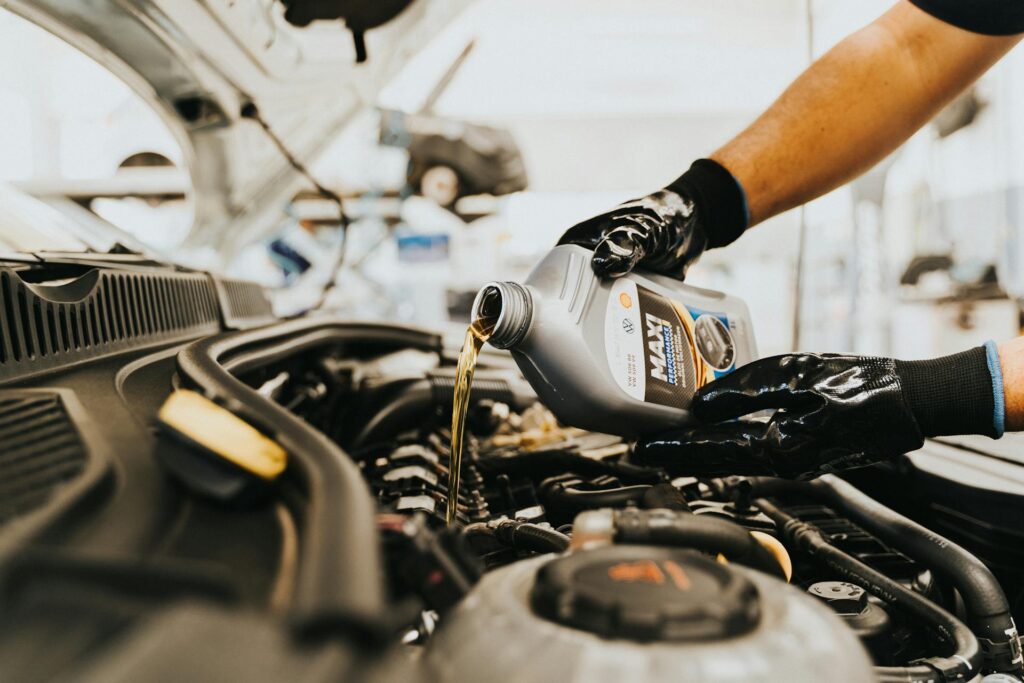Vehicle maintenance checklist: How to take care of your ride
Keeping your car in top condition can feel overwhelming at times, especially if you’re unsure where to start or what to focus on. That’s why it’s useful to have a vehicle maintenance checklist, a guide that can help you perform routine inspections and tasks to keep your vehicle running smoothly.
This checklist can help you address various aspects of your ride’s operations, safety, and performance, helping you to stay protected while on the road and extending your vehicle’s lifespan. While every car is different, requiring unique care, here’s a breakdown of the various maintenance you should regularly conduct to use as a starting point:
Monthly maintenance: Small tasks with big impact
Taking a little time each month to look over your car ensures small issues don’t escalate into costly repairs. Here’s what to do:
- Check and top off fluids: Engine oil, coolant, brake fluid, and fluid for windshield wipers should all be at their proper levels. Low levels can lead to serious damage or impair vehicle performance.
- Check tire pressure: Properly inflated tires improve fuel efficiency and safety. Use a pressure gauge and refer to your car’s manual for the recommended PSI.
- Clean the exterior and interior: Regular cleaning protects your car’s paint and prevents dirt from damaging internal systems, while a clean interior keeps you comfortable.
Every 3 months: Routine inspections for smooth performance
Quarterly check-ins target wear and tear that occurs naturally over time. Focus on the following areas:
- Check engine oil and filter: Clean oil keeps internal combustion engine vehicles lubricated and running efficiently. Skipping this step can lead to engine deterioration.
- Check car battery terminals and cables: Look for corrosion or loose connections that could lead to electrical issues.
- Inspect lights: Ensure all headlights, brake lights, and turn signals are functioning properly. Replacing burnt-out bulbs is a quick fix that boosts safety.
- Examine wiper blades: Worn blades can streak or fail to clear your windshield effectively, making driving hazardous.
- Inspect hoses: Check for cracks or leaks, which can indicate issues with your cooling or heating systems.
Every 6 months: Mid-year tune-up
Halfway through the year, it’s time to dive a little deeper into your car’s condition:
- Check brakes: Listen for squeaking or grinding noises and inspect brake pads for wear. Your brakes are critical for safety, so don’t ignore warning signs.
- Inspect exhaust system: Look for rust, damage, or unusual noises that could indicate leaks.
- Test battery conditions: Extreme temperatures can impact your car battery’s performance. Use a multimeter to check its charge or have it tested professionally.
Yearly maintenance: A comprehensive check-up
As part of your annual routine, focus on more in-depth maintenance tasks:
- Check transmission fuel: Low or dirty transmission fluid can lead to shifting problems. Make sure the fluid is at the proper level and replace it if needed.
- Replace cabin and engine filters: A clean cabin filter improves air quality, while a fresh engine filter boosts performance and fuel economy.
- Flush coolant system: Old coolant loses its ability to regulate your engine’s temperature. Flushing the system prevents overheating and corrosion.
- Rotate tires: Rotating your tires promotes even wear, which improves their lifespan and enhances vehicle handling.
Pro tip: Not sure how to conduct some of the mentioned maintenance tasks? Don’t sweat it! There are loads of tutorials online to guide you, so don’t be afraid to leverage those resources when needed.
Benefits of following a preventative maintenance checklist
Taking preventative action for your vehicle is advantageous, but fewer people take the necessary steps to keep their ride in top shape. And this is a big problem, as J.D. Power found that vehicle owners are experiencing lower levels of vehicle dependability after three years of ownership. Follow a preventative checklist to experience the following benefits:
Improved vehicle reliability
Your vehicle is connected to your livelihood, especially as a delivery driver. Whether you’re using it to drop off goods for customers or need to go to the grocery store or make appointments for yourself, having a reliable vehicle is vital.
Longer vehicle service life
Shopping for a new car can be expensive and time-consuming—there are many considerations that you must take into account to find the right vehicle. Rather than running your current ride into the ground, taking proactive steps to care for it can extend its use.
Less expensive and frequent repairs
While it might be monotonous to follow a regular cadence of vehicle touchups, taking a bit of time each month can end up reducing your trips to the repair shop—plus, they can make it less expensive when you do have to take your car in for work.
Improved safety
While a small bout of car trouble doesn’t automatically put you in danger, a bigger issue like worn-down tires or engine deterioration can. Let’s say you’re on a busy street and your car stops working. Having to get out of the vehicle or troubleshoot while on the road puts you in a potentially unsafe situation.
Enhanced fuel efficiency
Regular car maintenance helps maximize your fuel efficiency by ensuring all components function properly, reducing friction and allowing for proper air and fuel mixture combustion. When this happens, the engine burns fuel more efficiently and uses less gas to produce power.
Protected warranty coverage
Many manufacturer warranties require proof of regular maintenance to remain valid. By following a checklist and documenting your service history, you safeguard yourself against costly repairs that would otherwise be covered under warranty.
Reduced unexpected breakdowns
When you know about your car’s conditions and possible problem areas, it’s easier to take care of issues before they get out of hand. This lowers the likelihood of hiccups, like breakdowns or malfunctions, that can hinder your delivery routes and daily routine.
Lowered environmental impact
A well-maintained vehicle operates more efficiently, burning fuel cleanly and reducing harmful emissions. Components like the catalytic converter and oxygen sensor play critical roles in minimizing pollutants, and their proper function relies on regular maintenance. By keeping your vehicle in top shape, you’re contributing to cleaner air and a healthier planet.
How frequently should you perform maintenance?
You can start with the cadence of maintenance tasks listed above. It’s also important to remember that the frequency of vehicle maintenance depends on factors such as the vehicle’s make, model, age, and mileage, as well as driving conditions and manufacturer recommendations. Every car requires slightly different upkeep, so it’s best to follow the patterns that you notice with your vehicle and trust your gut when it comes to doing what’s best for it.
What vehicle parts need the most attention?
When you know what parts of your vehicle require the most focus, it’s easier to take the stress out of your maintenance. There are a few key areas of your vehicle that need consistent attention:
- Tires are a top priority—they’re your car’s direct connection to the road.
- Oil is your car’s lifeblood—it keeps the engine components lubricated and prevents damage from friction and heat.
- Brake pads wear down over time, and ignoring them could lead to costly rotor damage or even unsafe driving conditions.
- Your battery powers everything from starting the engine to running electronics, so keep an eye on its charge and clean any corrosion around the terminals.
A preventative maintenance checklist is more than just a to-do list for your car; it’s a way for you to commit to pursuing safety, savings, and sustainability. Want to learn more about driver safety? Check out Grubhub’s featured safety initiatives to help you during your routes, and explore our recommended delivery driver safety tips.




